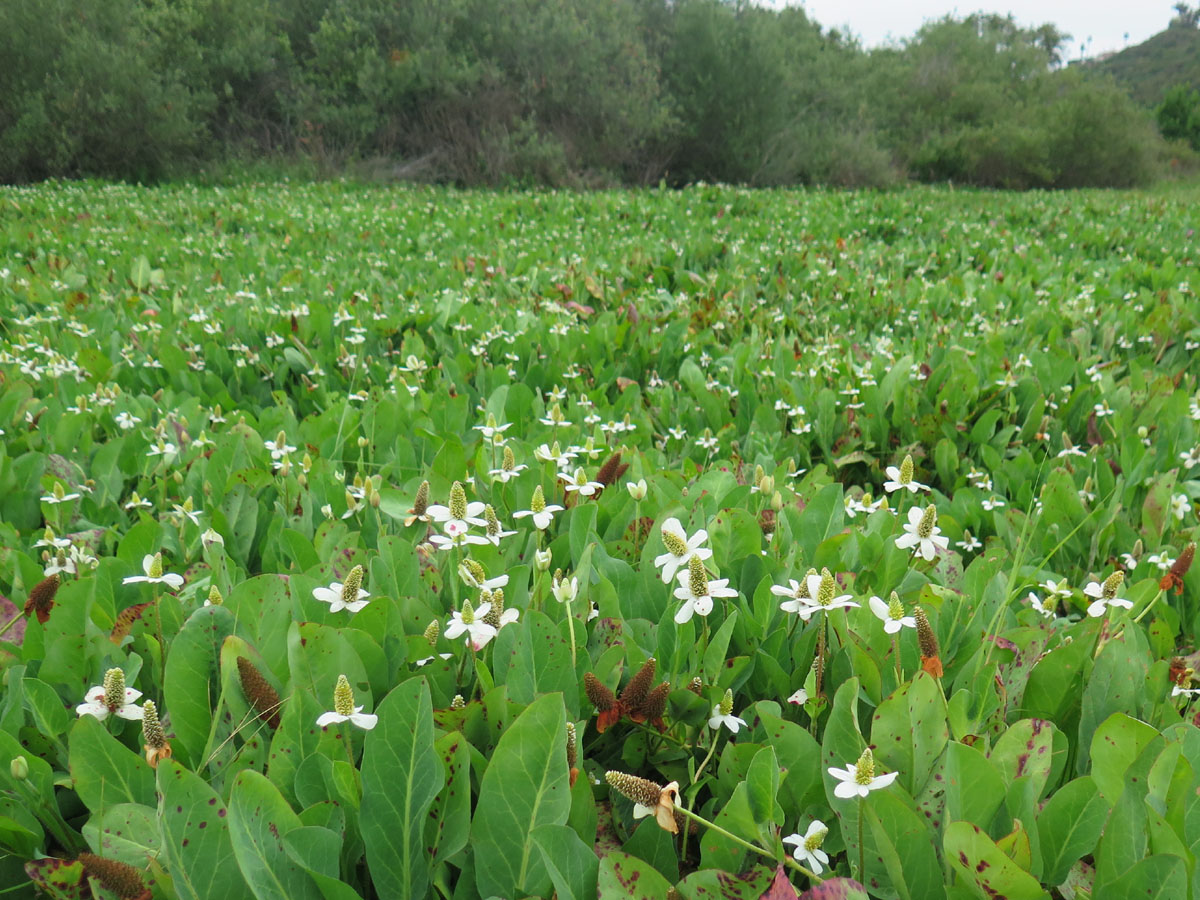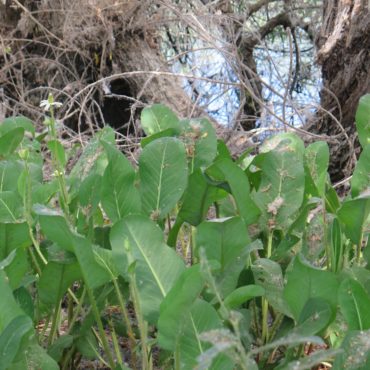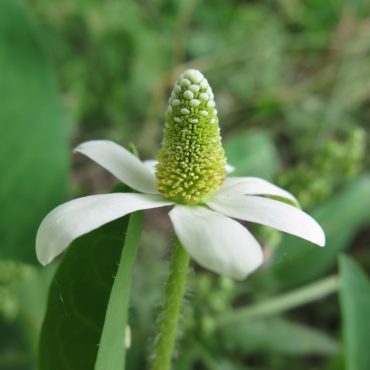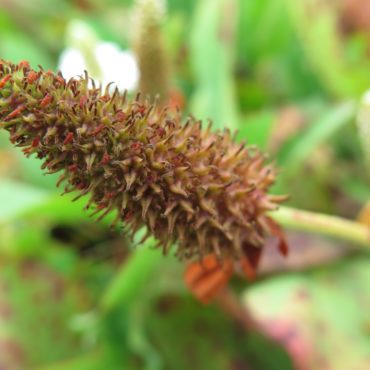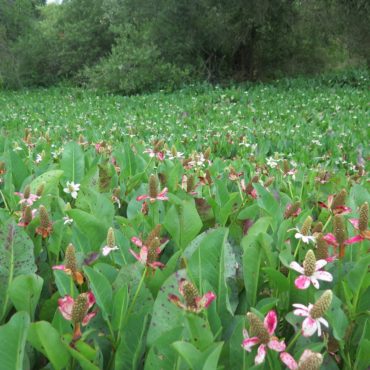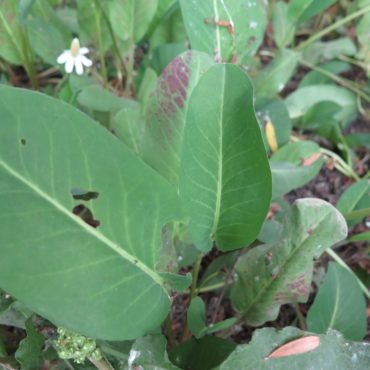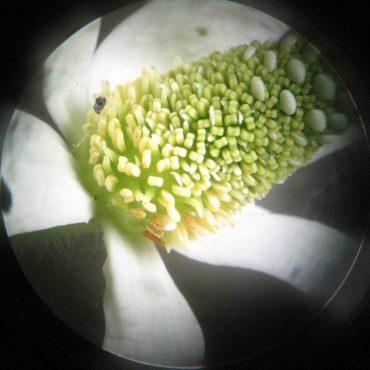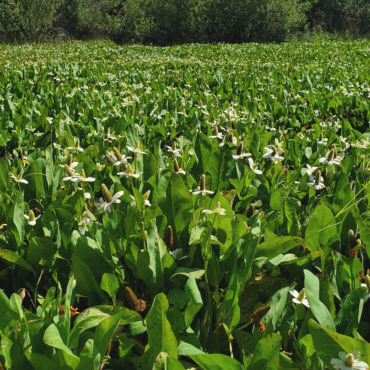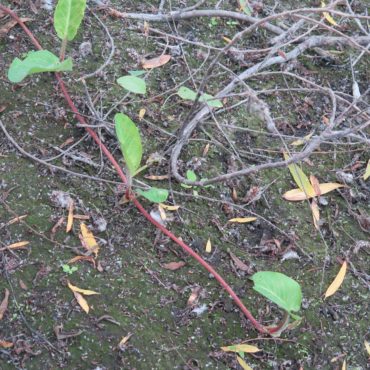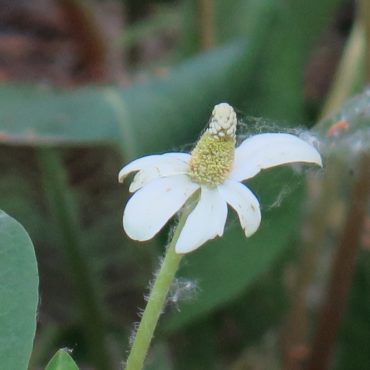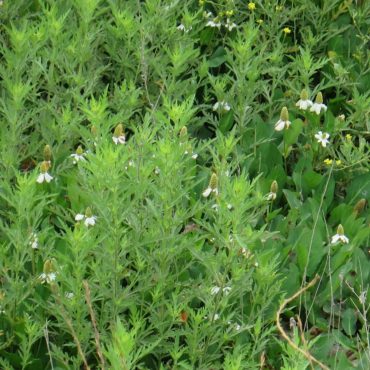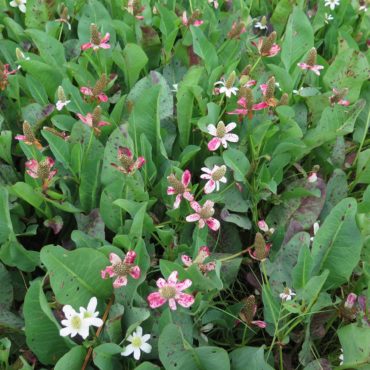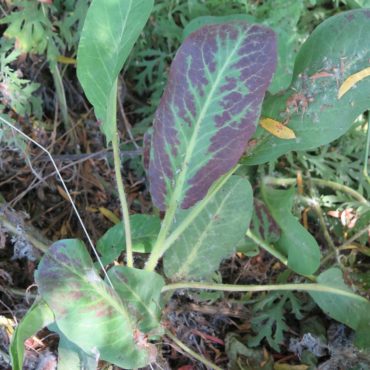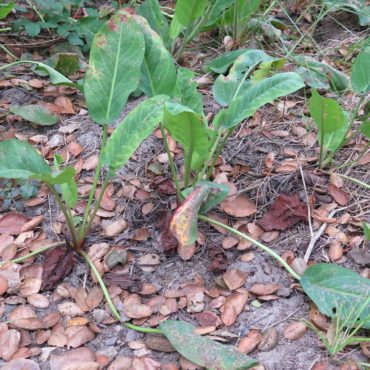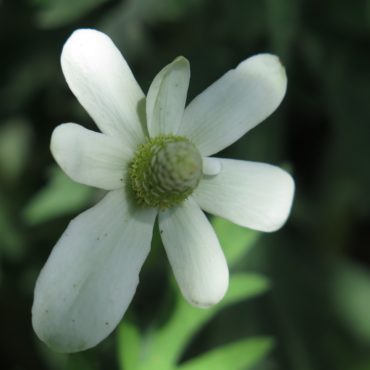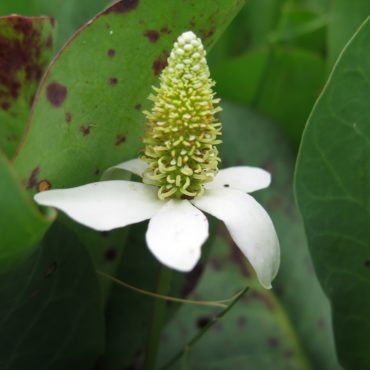Description
4,11,34,59
Yerba mansa (Anemopsis californica) is a unique-looking perennial herb, that often forms large mats from horizontal stems (stolons and rhizomes) that spread at or just below ground level. Clumps of leaves are produced and root at discrete nodes along these stems (much like a strawberry plant). Leaves may stand two or three feet (75 cm) high, but are usually shorter. Long petioles support oval or elliptical blades, that are smooth, almost rubbery in appearance. Older leaves may develop splotches of rose. All parts of the plant are aromatic. The scent has been described as “a cross between Camphor and Eucalyptus”,293 “deep, woody”272 and “spicy”.41 The precise aroma varies. One patch in the Reserve gave off a peppery scent, reminiscent of nasturtium.
Leaves surround a vertical stalk supporting one (sometimes more) dense, conical inflorescences composed of a hundred or more tiny flowers. At the base of each cluster is a ring of five to eight large petal-like bracts, white sometimes blotched with rose; these protect the developing inflorescence and, when open, give the entire cluster the appearance of a single flower. The component flowers are difficult to interpret because the bases of the flowers are sunk into the tissue of the supporting stem and individual flowers do not separate easily, either physically or visually. There are no sepals or petals. Each tiny flower consists of six stamens and one pistil with an inferior ovary and a style with three linear branches that curve outward when mature. Below each tiny flower is a single small, white oblong bract (or bractlet), ¼ inch or less (0.6 cm) wide. In a young inflorescence, the many small bractlets are often the most striking feature. Flowers bloom between March and September.468
Each tiny flower produces a few small seeds. As they mature, the numerous flowers become a dense, solid structure embedding hundreds of tiny seed capsules. These split open from the top, releasing seeds. The entire inflorescence may occasionally act as a dispersal mechanism, floating away with high water to drop its seeds elsewhere.41

